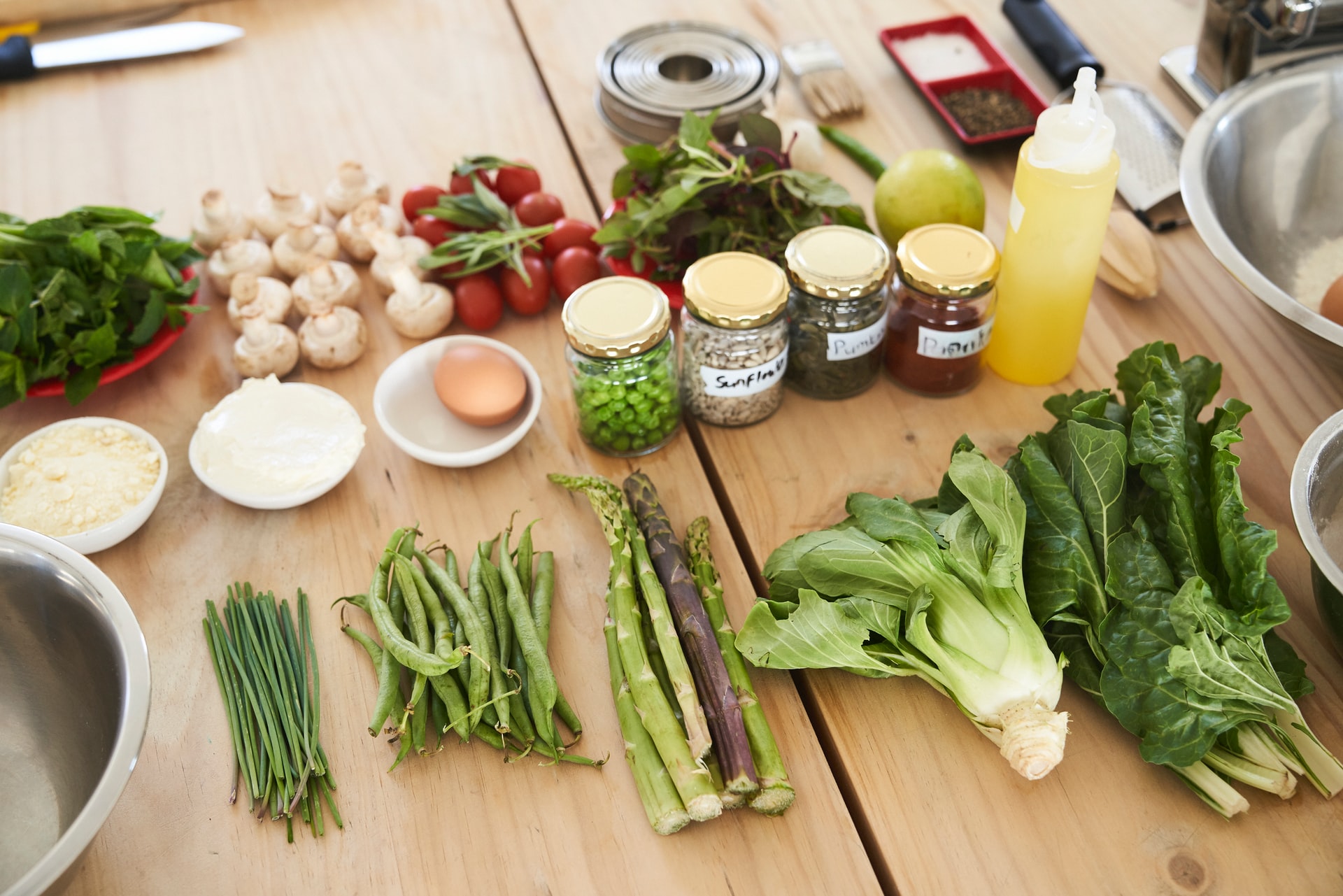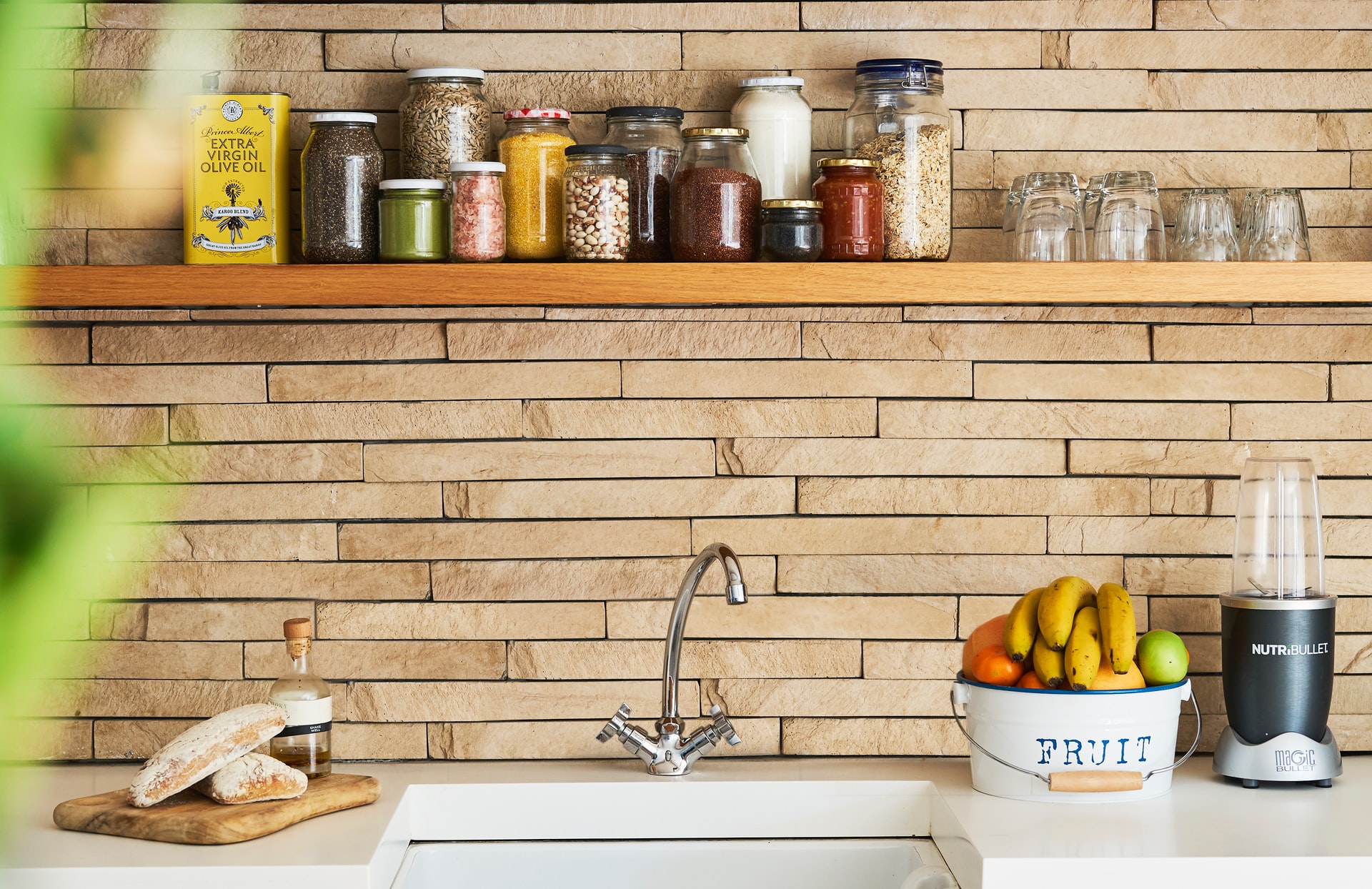Chances are, you’ve heard about green living, zero waste, and sustainable homes before. But maybe you’re not sure how to put these ideas into action in your own life. Creating a sustainable kitchen is a great first step toward embracing an eco-friendly lifestyle. Did you know that approximately 30-40 percent of the food supply goes to waste every year? The good news is there are plenty of simple changes you can make to lead a more sustainable life in your kitchen.
The importance of sustainability in the kitchen
Whether you’re whipping up a meal from scratch or a quick microwave dinner, adopting sustainable practices and materials can significantly benefit our planet. Given that most of us spend a significant part of our day in the kitchen preparing meals, embracing sustainability in this space is necessary.
By mastering simple techniques to save energy and minimize waste, you can shrink your carbon footprint and contribute to a healthier environment. With more individuals embracing sustainable living, these collective efforts yield positive impacts. By trimming energy consumption and curbing waste production in the kitchen, we can collectively make a meaningful difference in the world. The more people adopt these practices, the greater the positive effects will be.
Appliances for a sustainable kitchen

In creating a sustainable kitchen, selecting the right appliances can significantly reduce energy consumption and minimize environmental impact.
- Energy-efficient refrigerators: Opt for refrigerators with Energy Star certification, which consume less electricity while maintaining optimal cooling performance.
- Garbage disposals: Look for models that efficiently break down food waste, reducing the amount of organic matter sent to landfills and contributing to composting initiatives.
- Induction cooktops: Induction technology uses electromagnetic energy to heat pots and pans, offering precise temperature control and greater energy efficiency than traditional gas or electric cooktops.
- Convection ovens: Convection ovens circulate hot air, reducing cooking time and energy consumption by maintaining consistent temperatures throughout the oven.
- Low-flow faucets: Install low-flow faucets to minimize water wastage during food preparation, dishwashing, and general kitchen use without compromising performance.
- Energy and water-efficient dishwashers: They have energy-saving features like shorter cycles, eco-friendly detergent compatibility, smart sensors for water optimization, and sensor technology to adjust water usage based on load size and soil levels.
- Solar-powered appliances: Explore options for kitchen appliances powered by solar energy, such as solar ovens or solar-powered ventilation systems, to reduce reliance on conventional energy sources.
Protecting your eco-friendly investments
Investing in eco-friendly appliances is a key step towards reducing your carbon footprint and embracing an environmentally conscious lifestyle. However, the longevity and performance of these appliances is just as important. This is where a home warranty can be your ally in safeguarding your appliances.
Longevity and performance
Home warranties cover a range of household appliances, including energy-efficient refrigerators, induction cooktops, convection ovens, and more. Even the most advanced appliances may encounter wear and tear or unexpected malfunctions with regular use. A home warranty can offer you peace of mind by providing repair or replacement services for covered appliances, helping you maintain the efficiency and functionality of your sustainable kitchen.
Financial protection and savings
It can protect you from unexpected repair or replacement expenses. The cost of repairing or replacing eco-friendly appliances can be substantial. With a home warranty, you can reduce financial strain and avoid the stress of unexpected repair bills.
Maintenance and support
Home warranties often include access to a network of qualified technicians and service providers who provide professional assistance whenever you encounter appliance issues. From routine maintenance tasks to urgent repairs, having a reliable support system in place can optimize the upkeep of your eco-friendly appliances, boosting their performance and extending their lifespan.
Tips for cooking and eating sustainably

Here are some tips to help you start cooking and eating foods more sustainably.
- Buy organic and local: Buy produce, meat, and eggs from local vendors and farmer’s markets to reduce waste from excess packaging and transportation. Look for local growers who only sell organic produce and other foods. Organic foods are grown and harvested without dangerous fertilizers or pesticides that can emit toxic chemicals into the soil, air, or water supply.
- Start an edible garden: Start your backyard garden and grow a variety of foods. Look at your local plant hardiness zone to determine which items will thrive based on your climate. You can grow fruits and vegetables outside, including mushrooms, potatoes, carrots, and tomatoes, or grow some apple and citrus trees. Start a small herb garden in your kitchen window so you always have healthy, flavorful ingredients on hand.
- Develop sustainable eating habits: You don’t need to be vegan or vegetarian to develop sustainable eating habits. Try to eat less meat and participate in “meatless Mondays” to reduce consumption. Factory farming is bad for animals and the environment, so seek poultry and meat that is grass-fed, free-range, and raised on ethical farms. You can contribute in many ways, from making seed milk to looking for alternatives.
- Practice meal planning: Another way to cook and eat sustainably is to plan your meals. Prepare larger batches of food, then separate and freeze them. You can reheat the food throughout the week. This habit saves you time and money in the long run.
- Eat in-season produce: Look for and eat produce grown and harvested in-season, which means that it is grown and consumed when harvested. Shop at smaller grocery stores, buy from roadside stands or visit a farmer’s market to find delicious produce grown, harvested, and sold within the current season. This means your food will taste fresher. It reduces waste due to farming out of season, which requires more energy, land, packing, transportation, and labor to grow.
- Be conscious about leftovers: Try to be aware of the leftovers you throw away by saving excess food for the next day’s meal. Make smaller meals so that you eat everything you cook in one sitting whenever possible. You can also go through your refrigerator to find some food you can use to make various recipes before it goes bad.
More ways to reduce waste in the kitchen
Another great way to practice sustainable living is by reducing the amount of waste you produce in the kitchen. Here are a few tips to help you get started.
- Recycle: Buy products that come in recyclable packaging and be conscious about the items you use that can be recycled whenever possible. Sign up for your local recycling program or gather recyclable items and take them to a local recycling center.
- Try reusable instead of disposable: Single-use items like paper towels, plastic water bottles, and napkins are one of the primary sources of waste. Switch to reusable items to develop a sustainable lifestyle. Use stainless steel or glass bottles for water and coffee, and try bamboo napkins and reusable kitchen towels that you can wash rather than throw away.
- Repurpose containers and jars: Instead of throwing away glass jars and containers, wash and reuse them for storing leftovers, bulk foods, or homemade sauces and dressings.
- Invest in quality kitchen tools: Choose durable kitchen tools and appliances that are built to last, reducing the need for frequent replacements and ultimately reducing waste.
- Use biodegradable packages: Purchase and store food in biodegradable packaging. These materials naturally degrade rather than sit in a landfill, which helps to reduce waste.
- Buy in bulk: Purchase items in bulk to reduce the amount of packaging you buy. Freeze any foods that will go bad before eating, or make large batches and freeze them in small containers to avoid food waste.
- Optimize food storage: Store food properly to extend its freshness and reduce waste. Use airtight containers or wraps to keep fruits, vegetables, and leftovers fresh for longer. Invest in reusable silicone food covers or beeswax wraps as alternatives to plastic wrap.
- Sort your waste: Sort and separate kitchen waste by type to make recycling easier. Items like glass, paper, and plastic should be separated, reused, or recycled whenever possible.
- Make your compost: Gather food scraps, coffee grinds, and other organic materials to make your compost pile. Not only are you reusing items instead of throwing them away, but compost provides healthy nutrients to the plants in your garden. You can also compost your yard waste too.
Kitchen waste reduction challenges and initiatives
Community-driven efforts are working to reduce kitchen waste and promote sustainable living. These initiatives encourage people and neighborhoods to adopt eco-friendly habits by highlighting the harmful impact of food waste on the environment and promoting ways to reduce waste.
- Zero waste challenges: Many communities organize zero waste challenges, inviting residents to commit to reducing their household waste to the bare minimum. Participants can learn strategies for mindful consumption, waste prevention, recycling, and composting. These challenges help people feel like they’re part of a team and responsible for each other. They also encourage people to support each other and share tips and ideas for reducing waste.
- Composting programs: Some communities offer workshops, provide compost bins, or pick up organic waste from curbsides. When people compost kitchen scraps and yard trimmings, they help the soil, reduce harmful methane emissions from landfills, and complete the organic waste cycle.
- Community gardens and food recovery initiatives: Community gardens are lively places where people grow food, learn, and connect. Residents work together to grow fruits and vegetables, share gardening tips, and promote local food. Also, programs help save extra food from stores and markets. This food is given to people who need it, helping to reduce waste and fight hunger.
- Educational workshops and awareness campaigns: Their goal is to teach people about how food waste harms the environment and help them make smart choices. They talk about planning meals, storing food correctly, understanding expiration dates, and finding new ways to use leftovers. These efforts give community members useful skills and information, encouraging them to change their habits and support sustainability.

From buying locally grown, organic produce to switching to energy-efficient appliances and eco-friendly cleaning products, keep these tips in mind to help you have a more sustainable kitchen at home. Employ minor changes and healthier habits as you reduce your carbon footprint and contribute to a cleaner, greener world. No matter what type of food you eat, these changes will make it easier to practice green living and enjoy a more sustainable lifestyle for years ahead.




